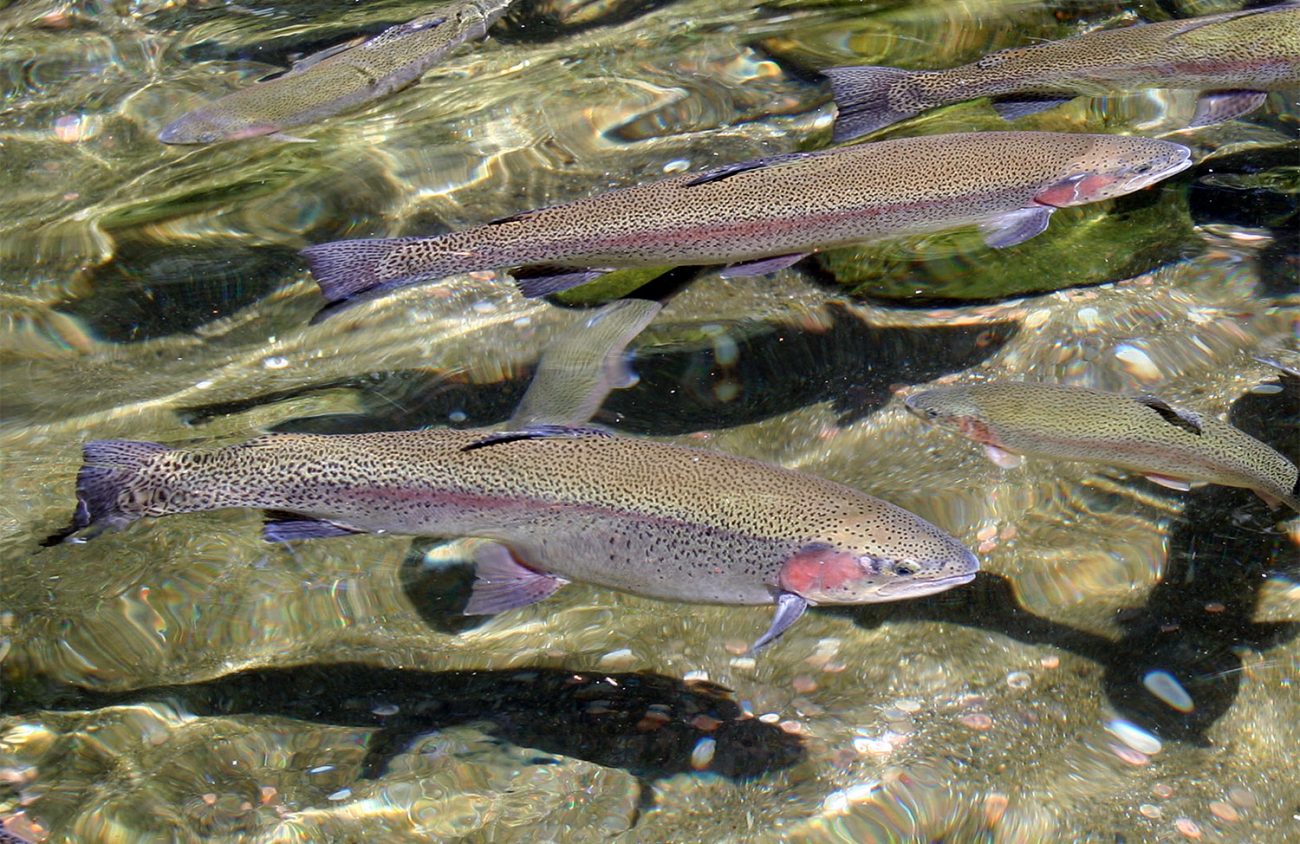Drive east out Highway 126, heading for the Cascades, and as the road follows a bend in the McKenzie River, you come upon the Leaburg Fish Hatchery. It has been stocking the river with fish since the 1950s to mitigate the effects of dams built in the Willamette Valley.
But now the hatchery is at risk of closure, after a brief 2018 reprieve from a previous shutdown threat.
Hatchery fish can be controversial, with naysayers pointing to genetic and ecological risks to wild fish populations, particularly salmon. However, along the McKenzie, river guides and recreationists have long counted on Leaburg’s hatchery trout for their catch.
Sean Davis is concerned about the effects of the hatchery’s shutting down on the McKenzie River economy. He points to the recent summer fires and the ongoing closure of Terwilliger Hot Springs.
“If we lose fishing tourism,” he says, then he worries the community “will go back to food stamps and welfare” as it did when logging slowed down in the 1990s.
Davis, who lives in McKenzie Bridge and has a book coming out on the history of wildland firefighting, says, “I wanted to make sure people [who] live and work up there have a voice.” In particular he means people who work in the service industry at hotels and lodges who would be disproportionately affected by the loss of tourism dollars.
Ryan Couture, hatchery coordinator for west region-south hatcheries for Oregon Department of Fish and Wildlife, says the saga started in 2015 when the Army Corps of Engineers, which owns the hatchery and had run it in cooperation with ODFW, told the hatchery it would change from the longtime cooperative agreement to contracts. In March 2017, the corps put the trout contract out to competitive bid.
“We bid,” Couture says, but the contract was awarded to Desert Springs Trout Farm, a private trout grower, which is slated to stock the river through 2022, he says.
Leaburg hatchery was scheduled to close June 30, 2018, but on the last day of that year’s legislative short session, lawmakers provided $350,000 in bridge funding to operate the hatchery through June 30, 2019.
Couture says that, for this year’s budget, the hatchery submitted a policy option package to the governor, but Gov. Kate Brown did not include funding for the hatchery in her budget to the Legislature, leaving the hatchery without money in July unless something is done.
“We start decommissioning starting July 1,” Couture says, “really evicting ourselves, moving fish.” But, he says, “folks are looking for a solution.”
Davis doesn’t want to see the hatchery close. He’s one of the many people who have gone up to Salem to work on finding that solution, recently speaking before the Joint Interim Committee On Ways and Means Subcommittee On Natural Resources.
Austin Parrett, legislative assistant for state Rep. Cedric Hayden, who represents the McKenzie Bridge area, says Hayden is looking into it and has reached out to ODFW and the Army Corps. Parrett says, “We are still gathering all the information and determining if there is something that can be done. Rep. Hayden would like to keep it open if possible. We have received many emails from the community stating their support for the Leaburg hatchery.”
Davis sees the current solution as a “swap option” in which the hatchery in eastern Oregon would still fill the ponds, lakes and rivers, but Leaburg hatchery would subcontract with them and raise and plant fish on the McKenzie.
Part of the concern, Davis says, is the quality of the fish from Desert Springs. He says the fish that were provided were raised in warmer waters and didn’t adapt well to the cold McKenzie. He says the fish were smaller and “were fed sinking pellets” and, as a result, they didn’t look up for bait.
Couture says that ODFW heard issues with fish not growing to the 8-inch legal catch size, and that “the McKenzie River is infamous for its fly fishing” and the fishing guides are vocal on the topic of noticeably fewer fish, or fish that didn’t take a fly or a hook.
Ethan Negus, partner and operations manager of Desert Springs, says he has attended several meetings with the McKenzie River Guides Association and “is aware of the issues,” which he says are “perplexing to us — virtually everywhere we plant fish, we get really good reviews.”
Negus says Desert Springs plants rainbow trout in about 15 to 20 other bodies of water throughout the Willamette Basin as well as down into lakes in the eastern Sierras and Mammoth Lakes area, including “a lot of cold-water bodies.”
He says, “We are doing every thing possible to improve the situation for the guides,” but adds that bank fisherman who use bait and not traditional dry flies the McKenzie is known for “seem to be doing quite well.” He also says Desert Springs is looking to increase the size of the fish it plants through a modification in the contract.
Meanwhile, “ODFW would like to continue to operate the hatchery,” Couture says. Leaburg is a valuable part of the hatchery program, he adds, with not only a “huge impact locally” but also on other hatcheries — for example, raising Coho salmon for Cascade Locks Hatchery after the Eagle Creek Fire, due to dangers from debris flows and mudslides.
“Leaburg has been extremely valuable from that perspective,” Couture says.
